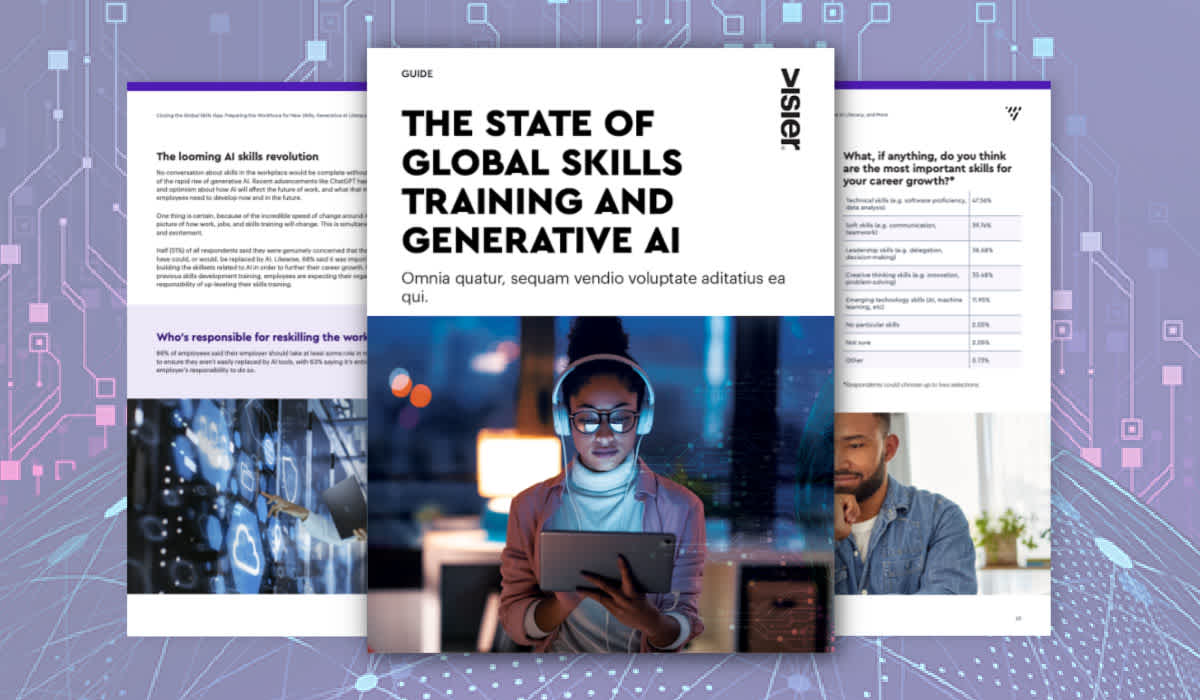FAQs About Vee, Visier's Generative AI Digital Assistant for People Data
With the recent introduction of Vee, Visier’s new generative AI digital assistant, we thought we’d create a post to address some of the common questions we get about it.

With the recent introduction of Vee, Visier’s new generative AI digital assistant, we thought we’d address some of the common questions we get about it.
What does Vee do, exactly?
Think of Vee as a brand new way to interact with Visier. When you’ve got a question about your workforce, instead of browsing our pre-built guidebooks or building an analysis with the usual Visier interface, just ask Vee a question using natural language. It’ll translate your question into a query, find the answer in your organization’s people data, and come back to you with an answer–also in natural language, including a chart when necessary.
Like other chatbots, Vee is interactive. You can ask Vee follow-up questions (or even take its suggestions for follow-up questions) and dive as deep as you want.
Why did Visier create a generative AI assistant?
We built Vee, our generative AI assistant for people analytics, for a few reasons.
First, it’s about getting more people insights into more hands throughout the organization. People analytics teams are often interested in getting as many people familiar with tools like Visier as possible, so folks in all parts of the business can self-serve when they have a question about their people.
But many end consumers of people insights—whether they are HRBP, first line people managers or organizational leaders—struggle with finding the time to locate, understand and digest the information. Vee sidesteps those barriers. If you can think of the question, you can ask Vee.
Second, it’s about speed and convenience. Vee returns answers in seconds, and people using our Microsoft Teams integration don’t even have to leave those tools to get the insights they’re looking for.
Finally, it’s about helping folks interpret data correctly. Not everyone “speaks analytics”. For example, a manager may have a question about the relationship between turnover and overtime on their team. They may ask their PA team for help, and the PA team might serve up an analysis. But what if that manager isn’t fluent in interpreting charts and graphs? The information could be ignored–or worse, misinterpreted.
Vee doesn’t assume. When someone asks a question, it’ll present the answer in ordinary language. When it includes a chart or graph, it’ll also summarize the information with text.

Q: How can Vee help people analytics teams?
Vee can help people analytics teams in a few ways:
It can help reduce ticket load, saving the PA team time and empowering more users to access insights on a self-service basis.
It can also open up the power of people analytics to new users in the organization who may not have been comfortable with it before.
Finally, it can help PA teams shift their focus from the foundational to the strategic. By taking many simple daily queries out of the PA workload, Vee can free teams up to focus on more strategic projects, or those of highest impact.
For more on this topic, see: 4 Strategic Ways Generative AI Bridges the Gap Between HR and Business
Q: How can Vee help HR teams?
Vee can help everyone in HR, from the CHRO to HRBPs and individual practitioners. When you can get answers to people questions faster, you can put that knowledge to use right away, and often that agility can make a huge difference in HR’s ability to solve a workforce challenge.
Suppose you’re an HRBP sitting in a meeting with the head of an R&D team in your company’s research division. They’ve noticed a pattern and would like your help knowing what to do about it: senior scientists seem to leave the company after two years.
The HRBP might like to know: is this something to be concerned about, or just recent happenstance? She might ask Vee about the trend of regrettable attrition in this part of the business. She might then ask Vee to narrow down on people whose tenure is around 2 years. From there, she might further ask Vee to compare this to company-wide attrition rates, or even industry-wide ones. As you can see, the conversation with Vee can be dynamic, self-serve, and it can happen right there in the meeting with the head of the R&D team.
If indeed an attrition problem is identified, the HRBP and R&D leader can work together on identifying specific steps to take right away, before the company loses any more valuable scientists.
Q: What’s the difference between Vee and other generative AI tools?
Consumer AI apps such as ChatGPT, Bard, and others, are trained on information available on the open internet. That means the answers they give are broad, general, and not customized to the person asking the question.
In contrast, Vee’s answers are limited only to your organization’s people data. Further, the answers Vee provides respect the security and access permissions of the person asking (as set up in Visier). That means Vee will never give out an answer that the person asking isn’t authorized to see.
Finally, Visier doesn’t train Vee using customer data. Think of Vee simply as another method of interfacing with your organization’s people data in Visier.



